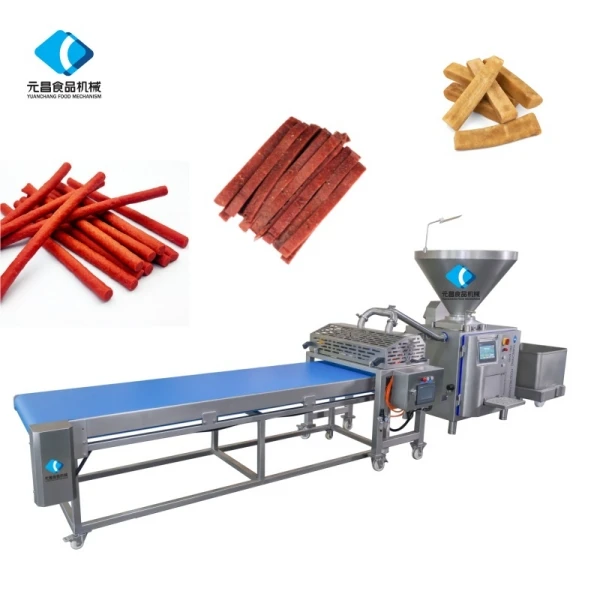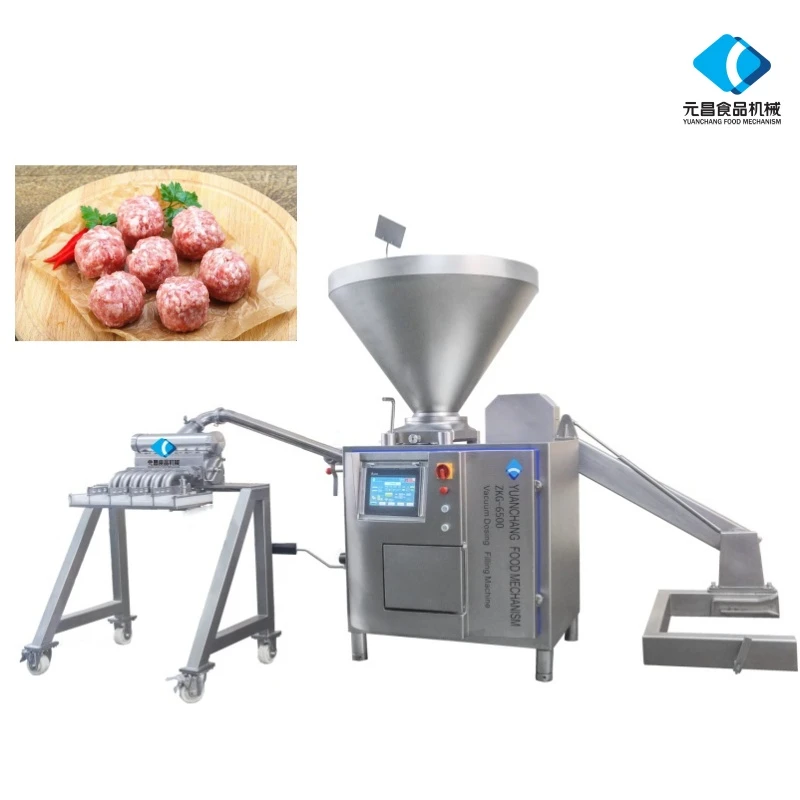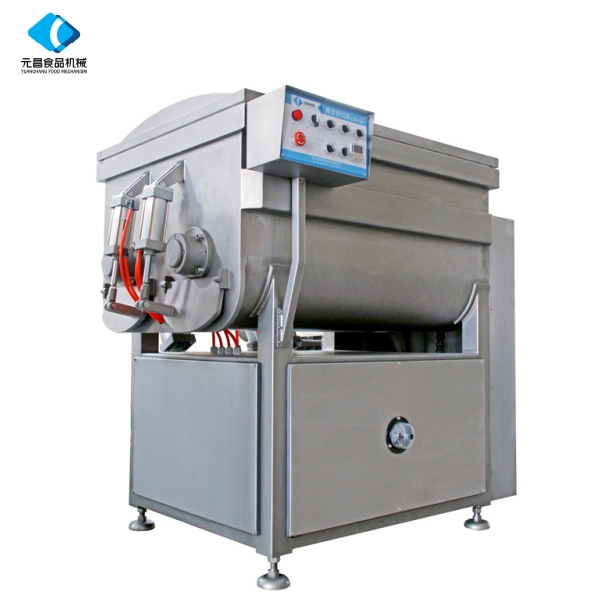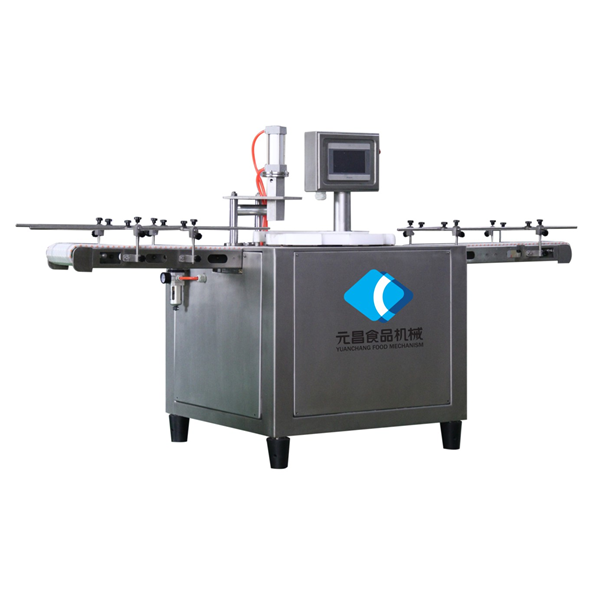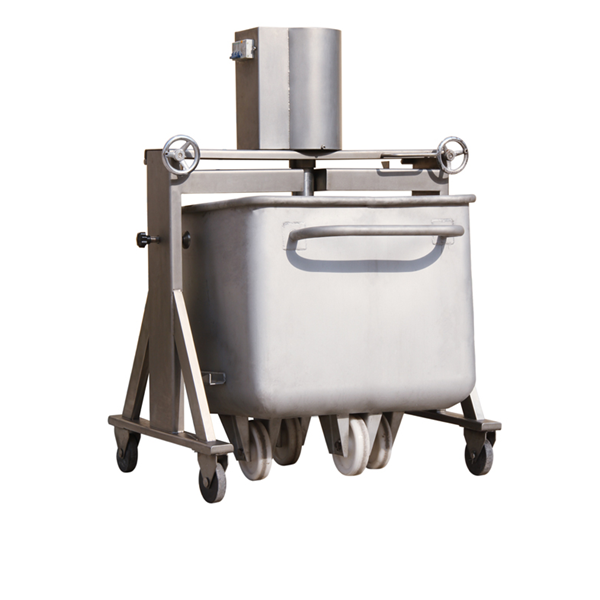Looking for a powerful, frozen-ready Bifinett meat mincer?
If you’ve spent time on a production floor, you know the grinder is where quality either sings or sinks. That’s why the bifinett meat mincer from YC Mechanism (model E130) caught my eye. Designed for fresh meat at around −10°C, it pushes through volume without the tell-tale temperature spike that smears fat and dulls color. In fact, hemoglobin retention looks better than average, and many customers say their batches hold definition longer in the tray.
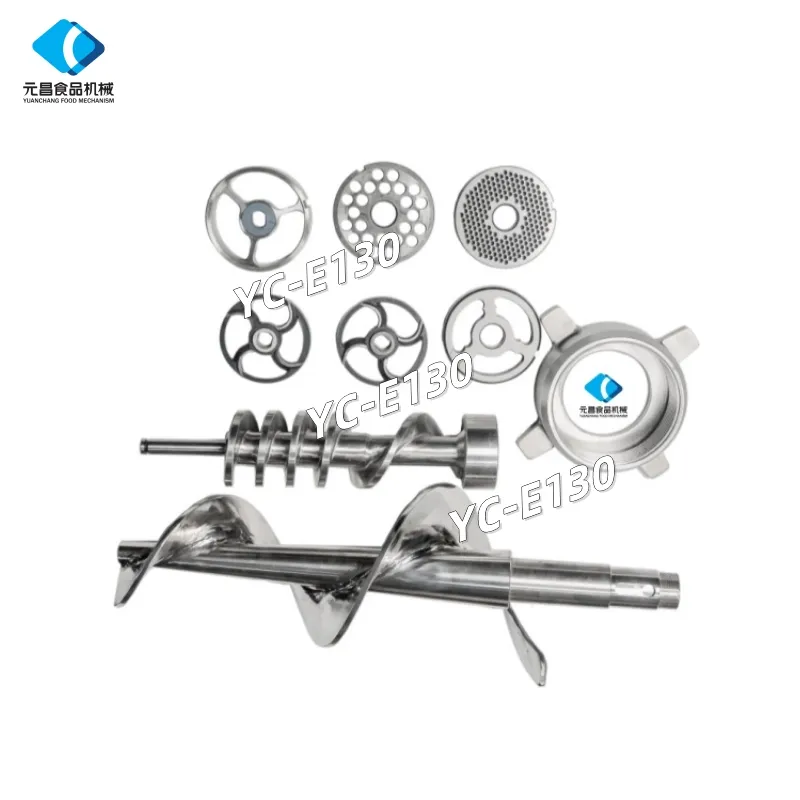
What’s trending in meat grinding
- Colder grinding for microbiological control and sharper particle edges.
- Modular knife/plate sets to switch between mince and slice in seconds.
- Hygienic design per EN 1672-2 and easy teardown—because sanitation wins shelf life.
- Data logging: temperature rise, throughput, even noise profiling in some plants.
Product snapshot and specs
Origin: Shijiazhuang, Hebei Province, China. The E130 is built for low-temp, high-throughput programs with minimal smear. Swap the cutter and you move from minced meat to slices without drama—handy in mixed SKUs and central kitchens.
| Parameter | E130 (≈ real-world) |
|---|---|
| Feed temperature | Down to −10°C, designed for fresh meat |
| Throughput | ≈800–1500 kg/h (depends on plate size, meat, operator) |
| Hole plates | 3–12 mm standard; 2–20 mm optional |
| Knife kits | 4‑arm hard-edge; ring knife double-cut |
| Motor power | ≈7.5–11 kW, 380V/50Hz 3‑phase (other voltages on request) |
| Materials | AISI 304 body; tool steel knives/plates; food-contact seals |
| Temp rise | ≤2°C under typical load |
| Noise | ≤78 dB(A) at 1 m (site conditions vary) |
| Sanitation | Quick-release head; tool-less knife/plate change |
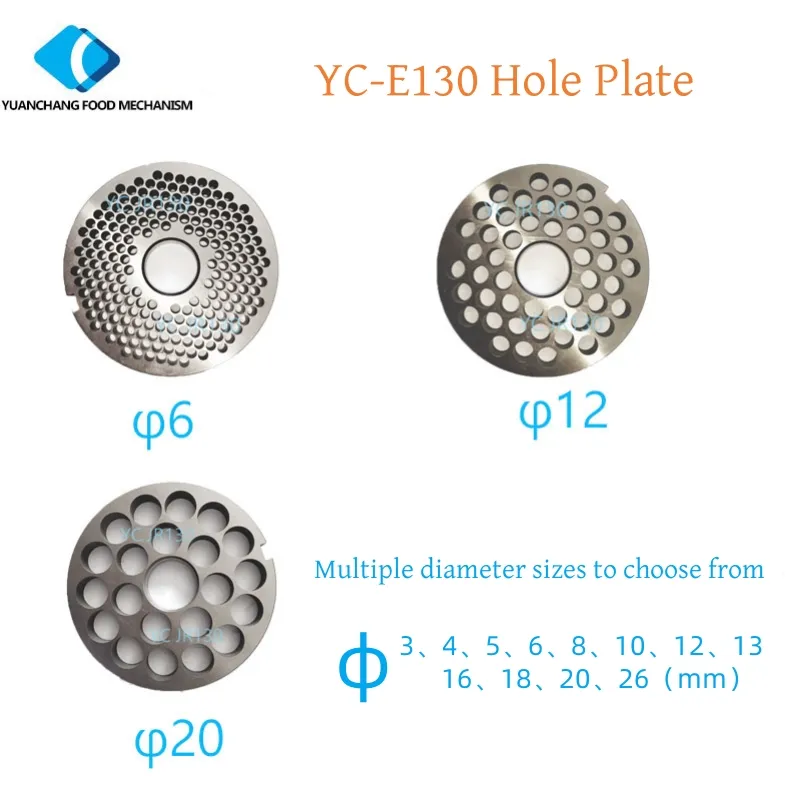
From build to validation: how it’s made and tested
Materials and methods: CNC‑machined housings in 304 stainless; knives heat-treated and ground for edge retention; passivated welds (ASTM A380). Optional electropolish for easier cleaning. Assembly includes torque verification and concentricity checks.
Testing standards and compliance: CE marking; electrical safety per EN 60204‑1/GB‑T 5226.1; hygienic design guided by EN 1672‑2 and ISO 14159; food‑contact parts aligned with EU 1935/2004. Real-world use may vary, but that framework matters when auditors show up.
Service life: main housing 8–10 years; hole plates ≈12–24 months; knives ≈6–12 months depending on throughput, sharpening policy, and bones—yes, trim discipline still counts.
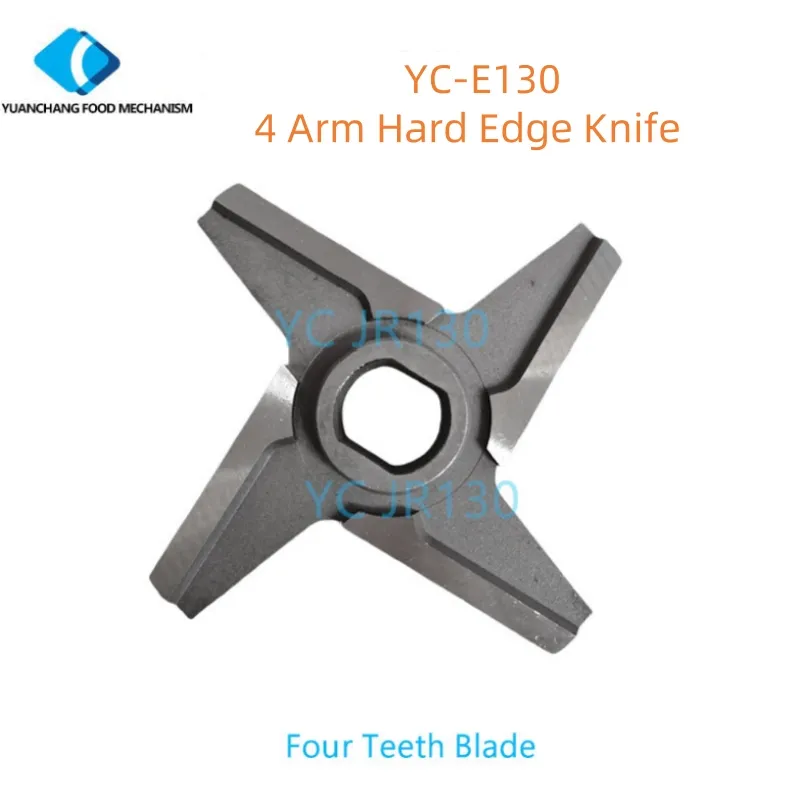
Where it fits: applications and quick wins
- Industrial mince for burgers, meatballs, dumplings, and kebabs.
- Pet food lines needing cold, clean particle geometry.
- Central kitchens switching between mince and slice SKUs.
Mini case: A Hebei dumpling plant moved to the bifinett meat mincer with a 4‑arm ring knife double‑cut. They reported tighter fat distribution and, surprisingly, 1–2 days of extra retail shelf life after dialing in −9°C feed temp and 5 mm plates.
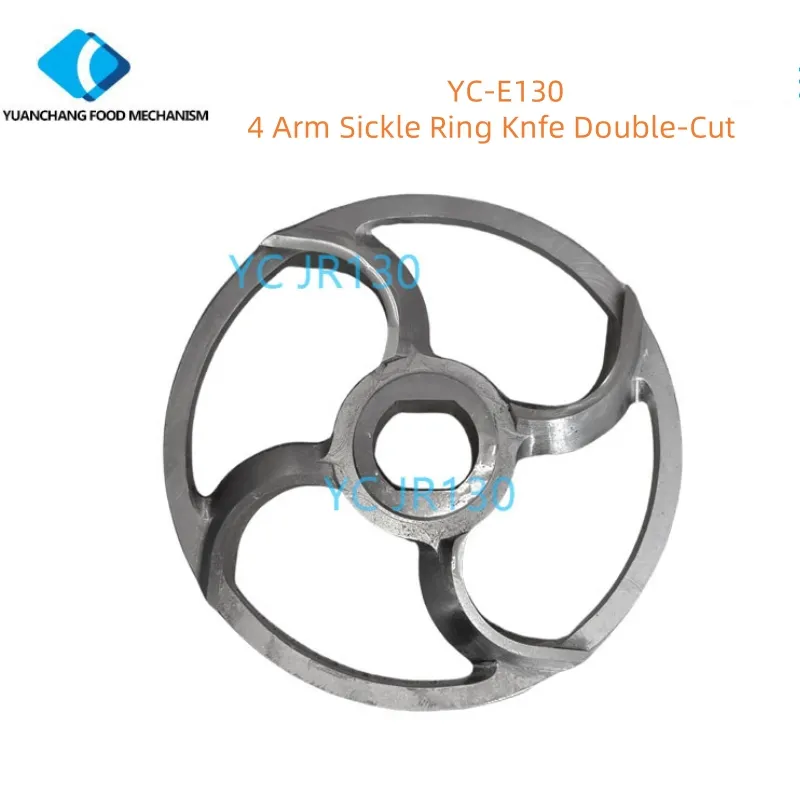
Vendor comparison (real-world view)
| Vendor/Model | Use case | Throughput | Cold feed (≈−10°C) | Sanitary design |
|---|---|---|---|---|
| YC Mechanism E130 (bifinett meat mincer) | Industrial/central kitchen | ≈800–1500 kg/h | Yes, designed for it | Quick teardown, smooth joints |
| Generic domestic unit | Home/light catering | ≤50 kg/h | No, tends to smear | Basic; not auditor‑grade |
| EU brand pro grinder | Industrial | ≈900–1600 kg/h | Yes | Excellent; premium pricing |
Customization and options
- Plates: 2–20 mm; knives: hard‑edge or double‑cut assemblies.
- Motors/voltages for different grids; IP ratings on request.
- Drainage angles, casters, CIP ports, and PLC interlocks for line safety.
- Private‑label branding and documentation packs for audits.
Feedback from operators? It seems that the bifinett meat mincer hits a sweet spot: fast changeovers, predictable particle size, and less heat creep. To be honest, that last one is what keeps QA off your back.
Citations
- EN 1672‑2:2020 – Food processing machinery – Basic concepts – Hygiene requirements. CEN. https://standards.cen.eu
- EN 60204‑1:2018 – Safety of machinery – Electrical equipment of machines. IEC/CENELEC. https://webstore.iec.ch
- Regulation (EC) No 1935/2004 – Materials and articles intended to come into contact with food. EUR-Lex. https://eur-lex.europa.eu
- GB/T 5226.1-2019 – Electrical safety of machinery. Standardization Administration of China. http://www.sac.gov.cn
-
Discover the Benefits of Vacuum Marinating Machines for Efficient Food ProcessingNewsNov.24,2025
-
The Ultimate Guide to Commercial Chicken Scalders: Efficiency, Sustainability & InnovationNewsNov.23,2025
-
Chicken Harvesting Equipment: Efficient & Humane Solutions for Poultry ProducersNewsNov.22,2025
-
Comprehensive Guide to Meat Processing Plant Equipment | Efficiency, Safety & SustainabilityNewsNov.21,2025
-
Meat Processing Bins: Durable Solutions for Safe & Efficient Meat Handling WorldwideNewsNov.20,2025
-
Best Commercial Marinating Machines for Meat Processing | Efficient & ScalableNewsNov.20,2025





